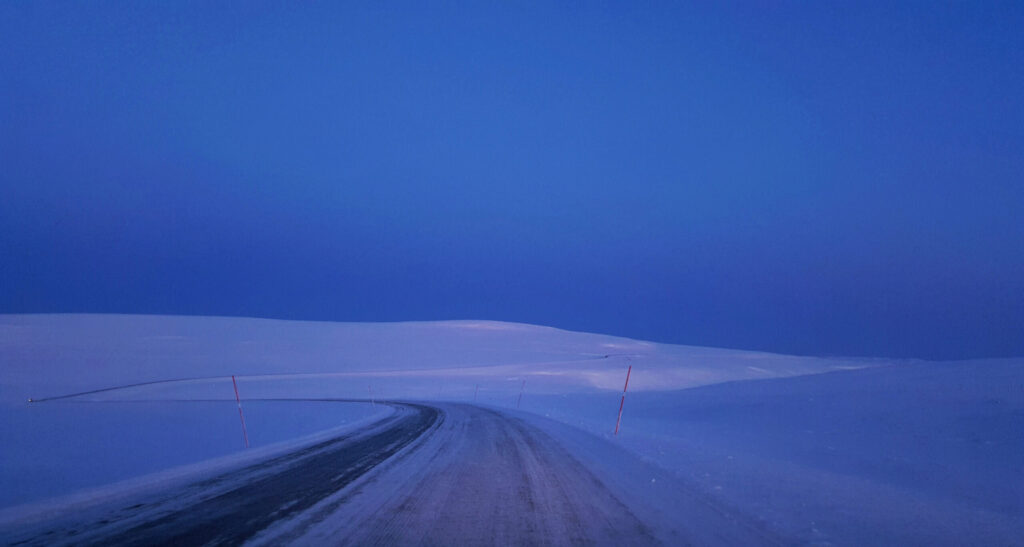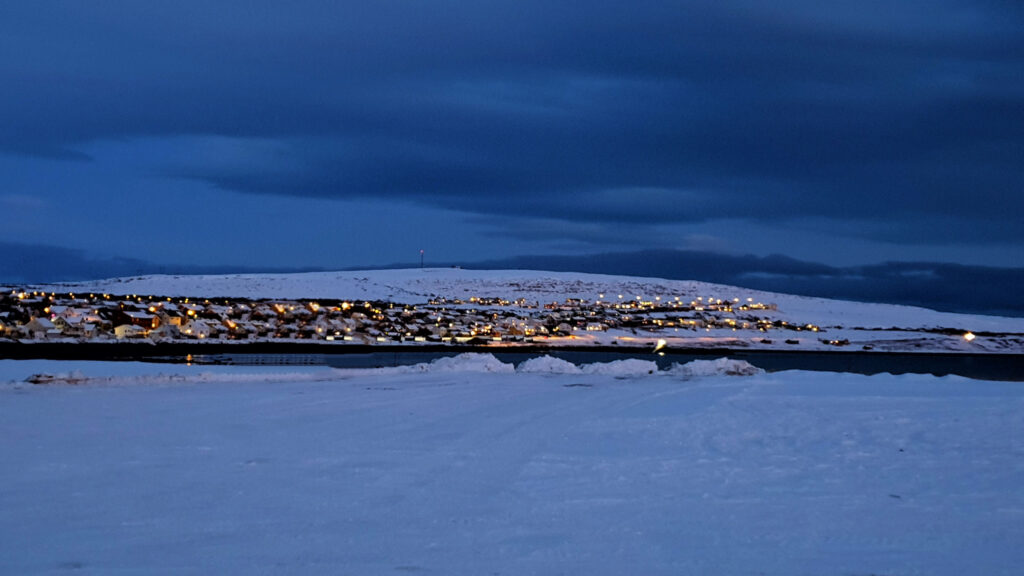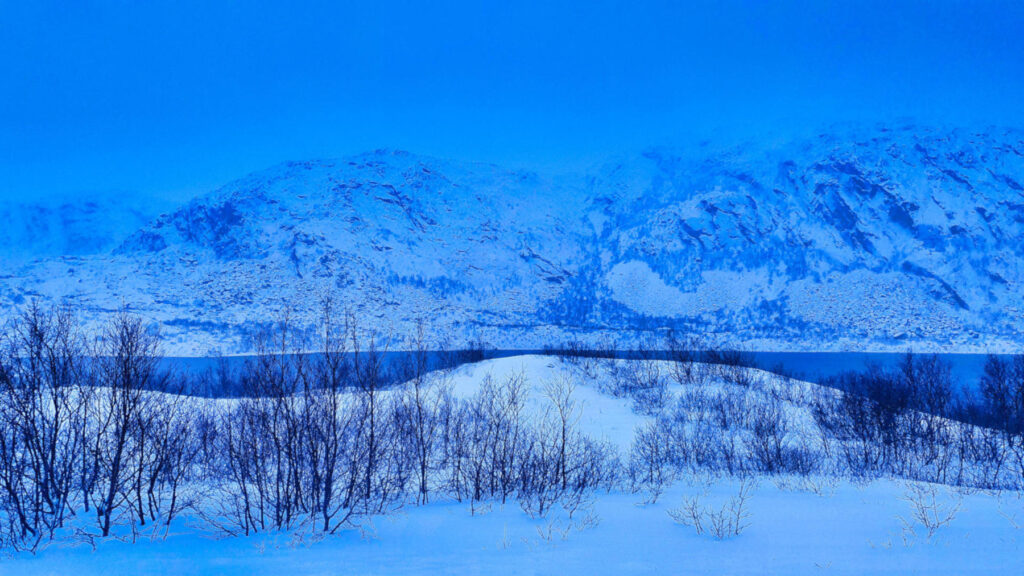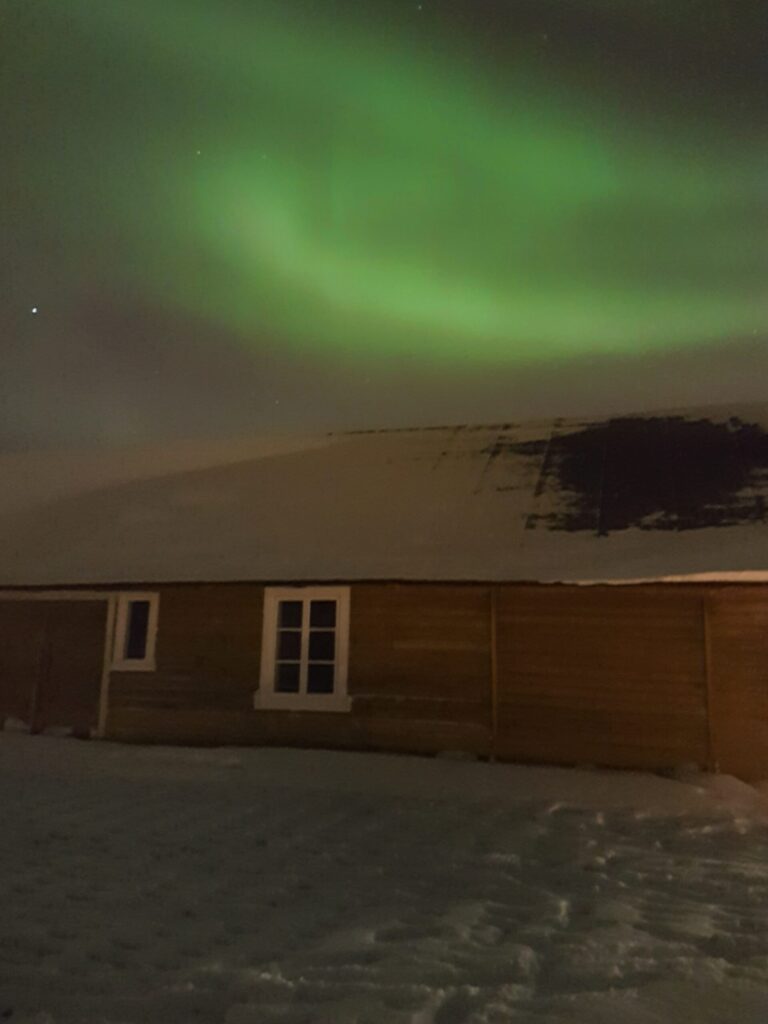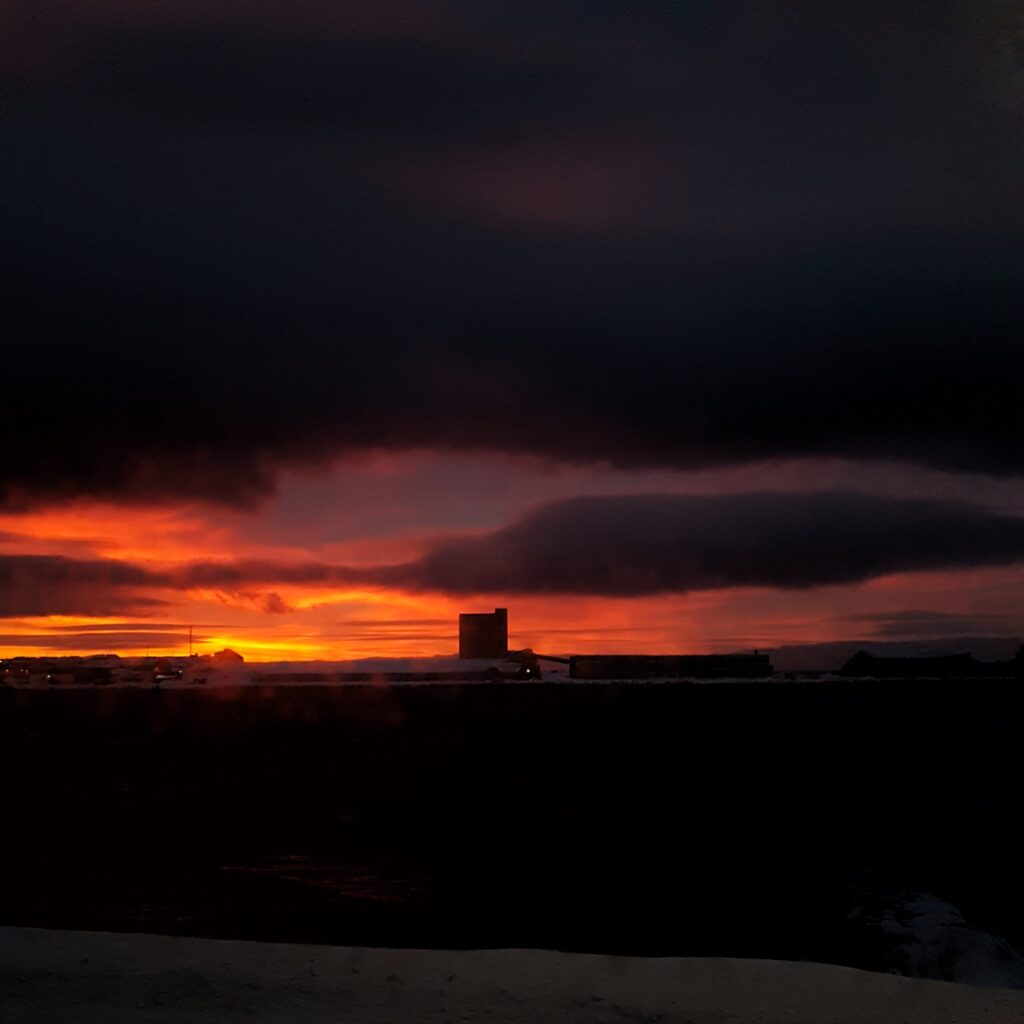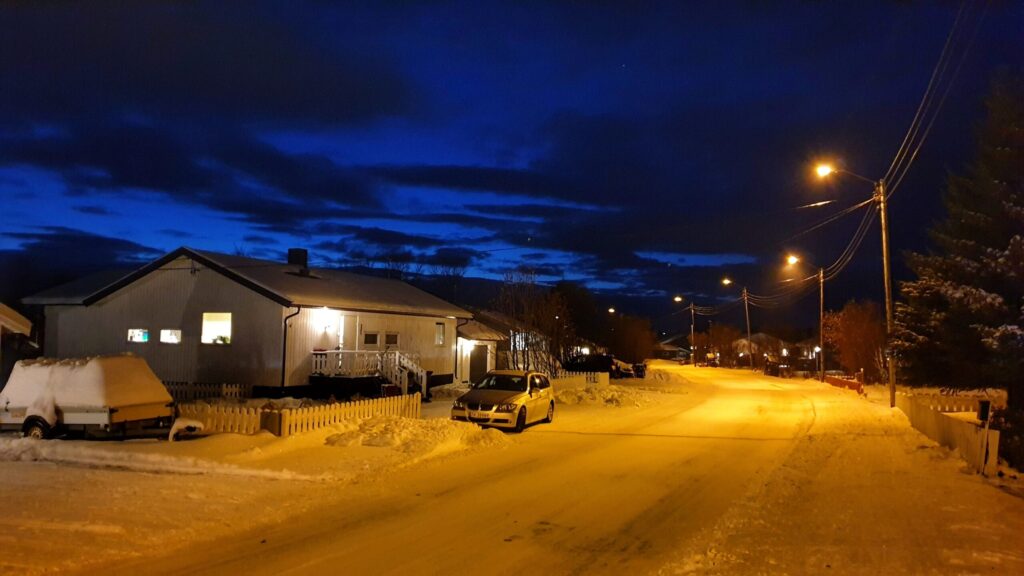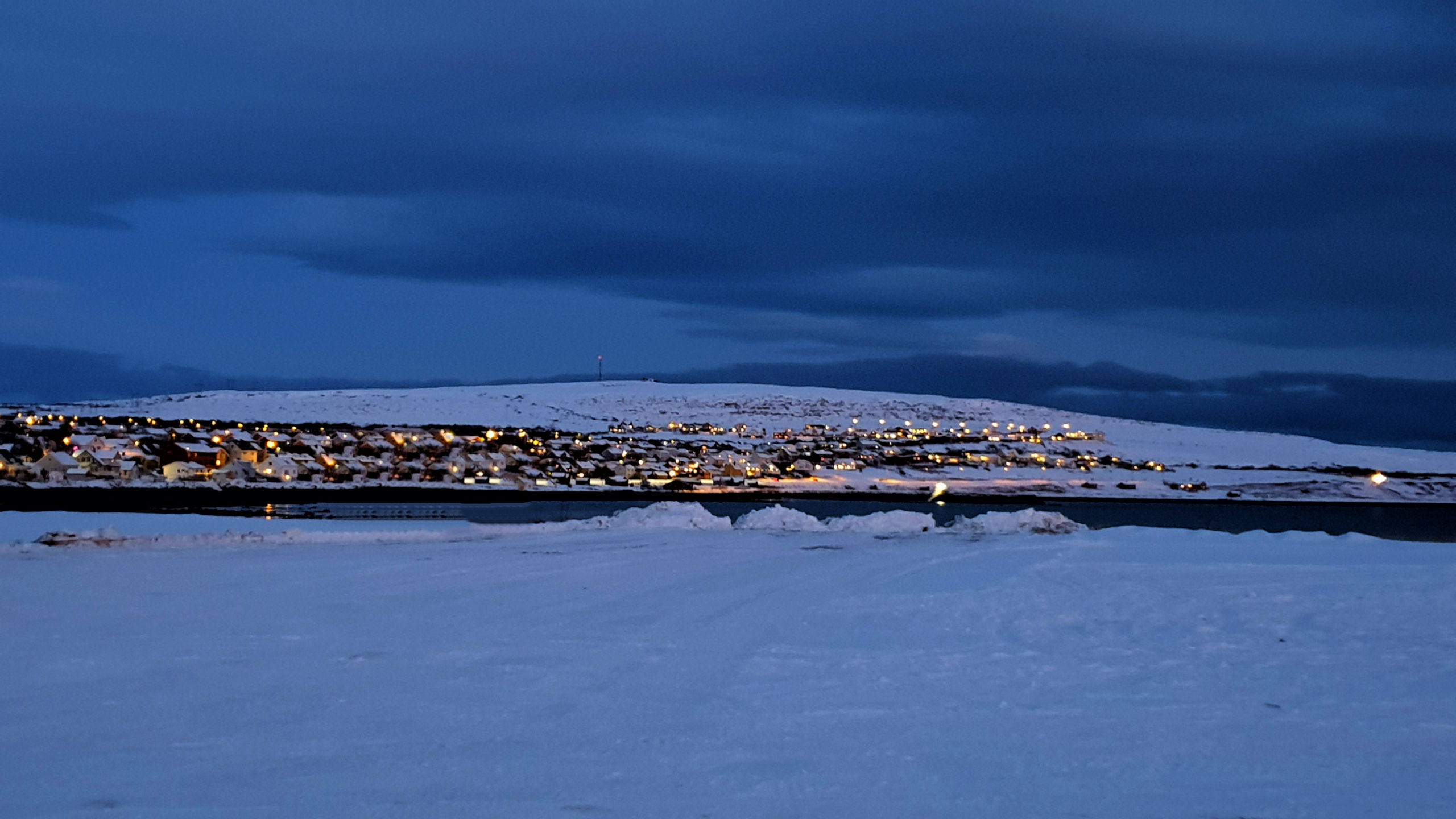
The Polar Night and the Polar Day

Earth is inclined in respect with the Sun in such a way that, over the North Polar Circle, during specific periods of time throughout the year, the Sun never rises. Or, the Sun is up in the sky all day and all night long. These periods of time are called the Polar Night and the Polar Day respectively. Polar night periods occur around the winter solstice (21st December), while Polar Days around the summer solstice (21st June). Typical to Polar Nights are the Northern Lights and, during the Polar Day, the Midnight Sun shines in the sky the whole “night” long. The length of the Polar Night/Day increases as the place where they occur is closer to the North Pole. As Varanger is well above the Polar Circle, all the region experiences these two polar seasons, during a considerable amount of time.
What is the Polar Night?
The Polar Night occurs before and after the winter solstice (21st December). It is a dark period in which the Sun never rises over a period of 24 consecutive hours. The Polar Night does not mean a complete black-out the whole time, like during a pitch black night. During the daytime hours, the Sun is indeed below the horizon; however, there is a bit of light coming from the Sun, due to light scattering by the atmosphere, and refraction, and which allows you to see the landscape or carry out various activities outside. But there is no direct light coming from the Sun, thus there is no true daylight.
A day in the Polar Night
A normal “day” during the Polar Night, begins with the astronomical night which spreads over the midnight time, and is followed by a period of astronomical twilight (very early mornings), then by a period of nautical twilight (that lasts till when people start going to work in the mornings). After that, the civil twilight brings a bit of light, due to the Sun which is closer to the horizon (but still under it), which usually covers the noon period. After that, nautical twilight starts during the afternoons and is followed by the astronomical twilight during the evenings and, finally, the astronomical night takes over and the cycle repeats.
When the sky is clear, there is more light than when the sky is covered by clouds. The Polar Night is a beautiful period, when Northern Lights may dance in the dark sky and when the full moon lights up the entire winter scenery.
Polar twilights
Throughout the daytime during the Polar Night, there is the so-called Polar twilight. In function of the Sun’s position, below the horizon, there are three kinds of such Polar twilight.
The civil twilight is characterized by the fact that the Sun is between 0 and 6 degrees below the horizon. In the middle of the civil twilight period, there is enough light to carry out normal outdoor activities. Although street lighting may stay on, you are able to take photos without the need to use a flash. Towards the end hours of the civil twilight however, light visibly starts to disappear.
The nautical twilight is characterized by the fact that the Sun is between 6 and 12 degrees under the horizon. This type of twilight always precedes or follows a Civil twilight period and, in the middle of the nautical twilight, light is very scarce.
The astronomical twilight is characterized by the fact that the Sun is between 12 and 18 degrees under the horizon. It is almost pitch-black during this time. Almost! However, the human eye is not able to normally detect the difference between this type of twilight and the astronomical (normal) night. During this whole period, it is completely dark outside. This type of twilight precedes or follows the nautical twilight period. Northern Lights or the starry Arctic night sky may be observed perfectly during the astronomical twilight.
Polar Night in Vadsø
Living in the Polar night is, for people living here in Vadsø, as normal as any other day. The latitude here does not permit to have a continuous pitch-black night, so, even if the Sun does not rise, it is not as low under the horizon as to not let any light. There is a bit of light, just like during an early evening, as the Sun is, during the “daytime” not below 18 degrees under the horizon. Street lighting is, however, at all times, on.
Life goes on completely normal, as if nothing strange is going on! Just visit us, and see for yourself. And, by the way, if you do choose to visit Vadsø during the polar night, there’s a lot to do here!
The real Polar Night starts around November 25, when the Sun will not come out until the coming year, around January 17. A few days before November 25 and a few days after January 17, the night is longer, and the Sun is visible very short over the horizon, creating an amazing light.
Polar blue
The blue hour occurs as well during the Polar Night, due to the light being reflected by the blue sea and white snow. During this blue hour, the whole scenery is covered in a surreal blue hue, known as the Polar Blue.
What is the Polar Day?
The Polar Day occurs before and after the summer solstice (21st June). It is a period in which the Sun never sets over a period of 24 consecutive hours. It is there, in the sky, during the day, during the evening, at midnight and during the whole night. The Earth is inclined in respect with the Sun and, during the Polar Day, the tip of the northern hemisphere is turned towards the Sun, thus the region above the Arctic Circle is completely illuminated by the Sun’s rays for several days in a row. This period, the Midnight Sun can be seen and enjoyed in Vadsø and all of Varanger.
Sleeping during the Polar Day
Normally, everyone adapts to the continuous light throughout the night and it shouldn’t be a big problem to sleep while outside it is sunny during the night. However, it IS true that the Sun makes us more energetic and our bodies think that they need less sleep. If you have problems falling asleep, try closing the window shades or putting on a sleep mask over your eyes. Or… if nothing works, why not just enjoy the Midnight Sun on the sea shore?
Polar Day in Vadsø
The Sun is 24 hours over the horizon between May 17 and July 27. A few days before May 17 and a few days after July 27 the day is almost 22-24 hours long and there’s no feeling that the Sun is not in the sky. A real night in the astronomical sense of the word (when the Sun is below 18 degrees under the horizon) occurs only before March 24 and after September 19, periods which slowly leads to the arrival of the Polar Night.

